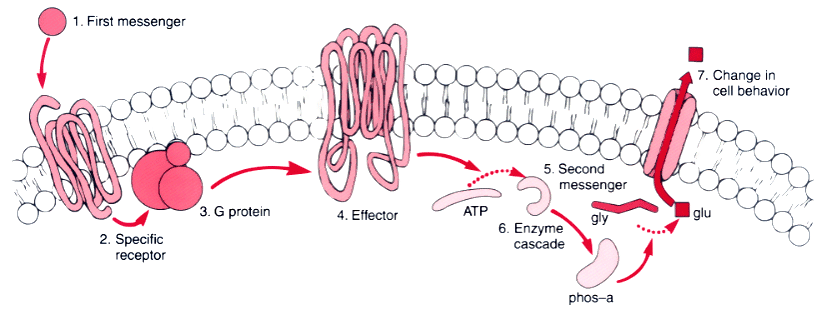Figure 16-16
Epinephrine-stimulated glycogenolysis in a liver cell
demonstrates the role of G proteins in cellular function. The first messenger (epinephrine)
binds to its specific receptor, stimulating the G protein (in this case, Gs) to activate
the effector, adenylyl cyclase. This enzyme converts adenosine triphosphate (ATP)
to cyclic adenosine monophosphate (cAMP), the second messenger, which then triggers
a cascade of enzymatic reactions that stimulates the enzyme phosphorylase (phos-a)
to convert glycogen into glucose, which the cell extrudes. (From Linder
ME, Gilman AG: G Proteins. Sci Am 267:56, 1992.)

